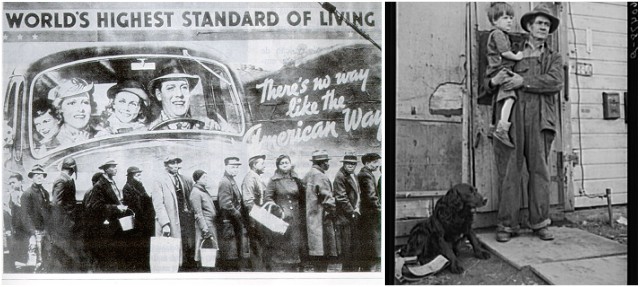The Great Depression of 1929 is undoubtedly the worst economic slump in US history. More than 40% of the American banks collapsed, unemployment rose to 25 percent.
Global trade collapsed by 60 percent and, in the next 25 years, the stock market struggled to recover from the devastating consequences.
Millions of people lost their jobs, and the country’s collective morale was at its lowest possible level, threatening to deepen the crisis. Many families were living below the minimal poverty level, and experts started losing confidence in unfettered capitalism.
It was at this point when thousands of billboards promoting the benefits of capitalism were erected across the country by the National Association of Manufacturers. One of the best-known was the billboard “There is no way like the American way,” created by Arthur Rothstein in 1937.
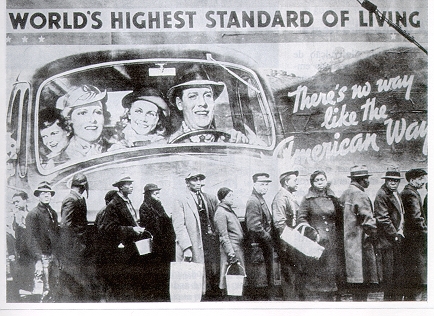
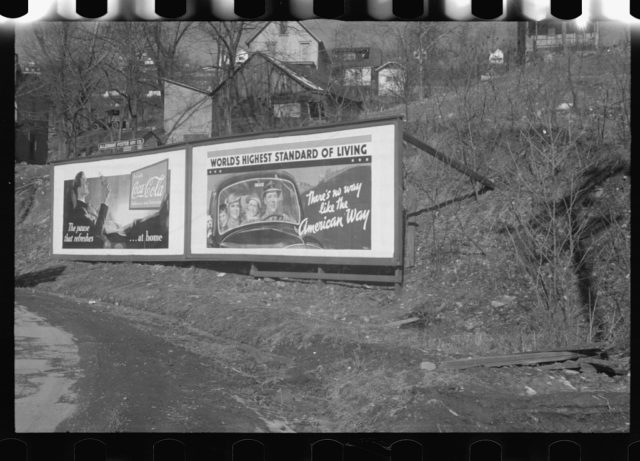
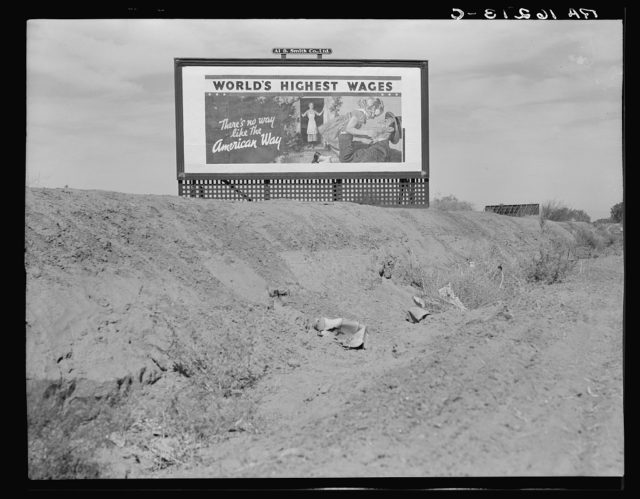
The billboards displayed the claim that America has the “World’s highest standards of living,” presenting an ideal American family driving confidently in a brand new car. It promotes the family values of the time, a perfect American couple in the front seats and two children in the back seat of the new car, having the time of their lives.
However, for most Americans, things were far from ideal and so witnesses the photography of African American men, women and children standing in a line in front of the billboard.
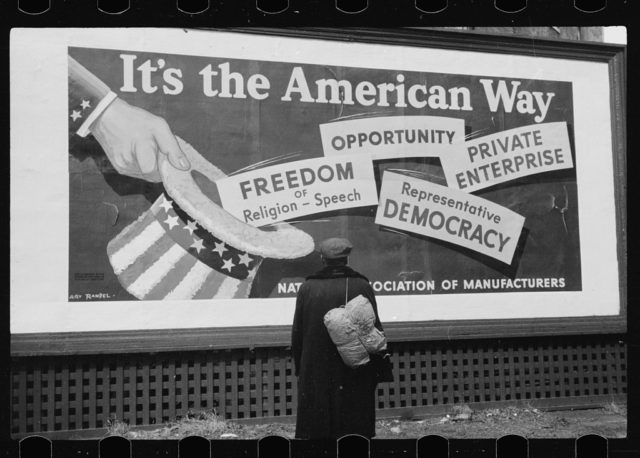
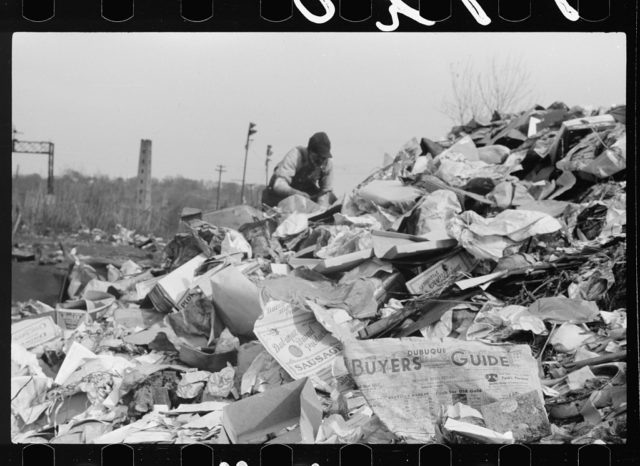
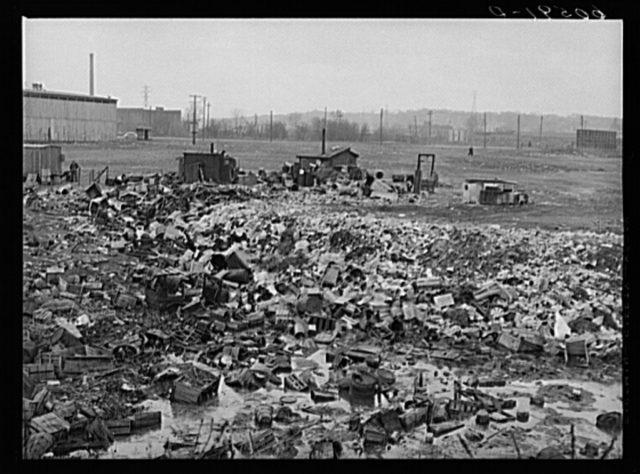
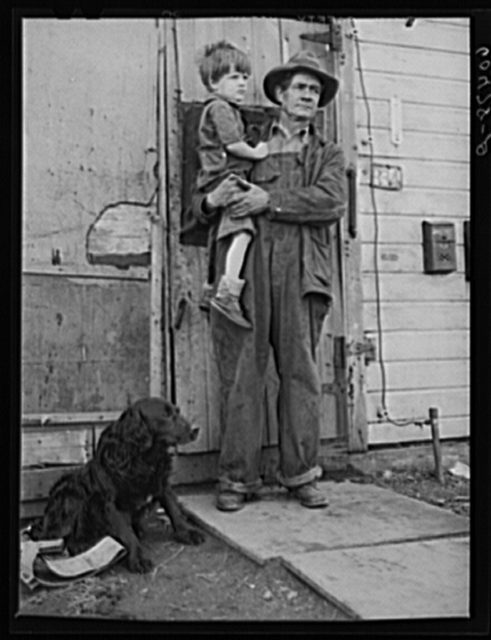
Margaret Bourke-White, who was working as a photojournalist for the Life magazine, was covering the Ohio River flood of 1937 and composed the photo which eventually became an icon of the Great Depression and one of the most iconic photographies in U.S. history.
Margaret Bourke-White wasn’t the only photojournalist who witnessed the combination of propaganda billboards, proclaiming that America has the “World’s highest standards of living,” along with the struggles of many Americans and migrants. Other eminent photographers were Dorothea Lange, who was probably the best known female photographer of the New Deal period, John Vachon, Arthur Rothstein, and Edwin Locke.
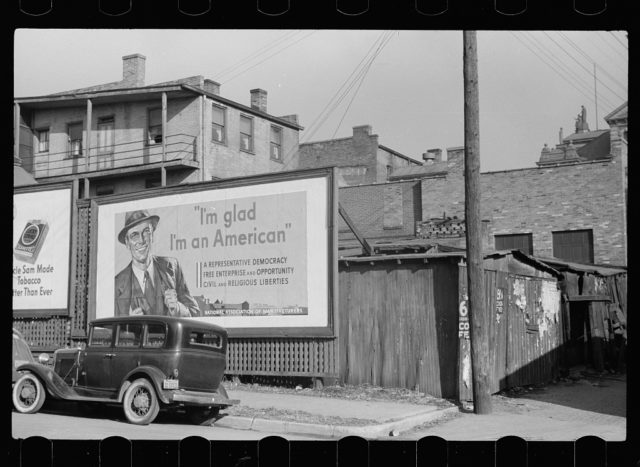
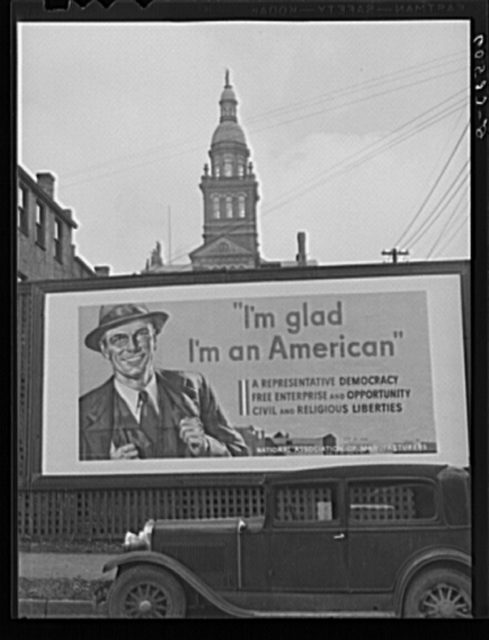
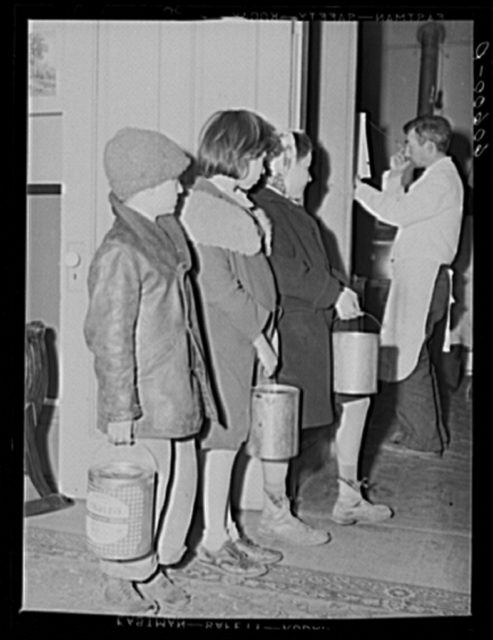
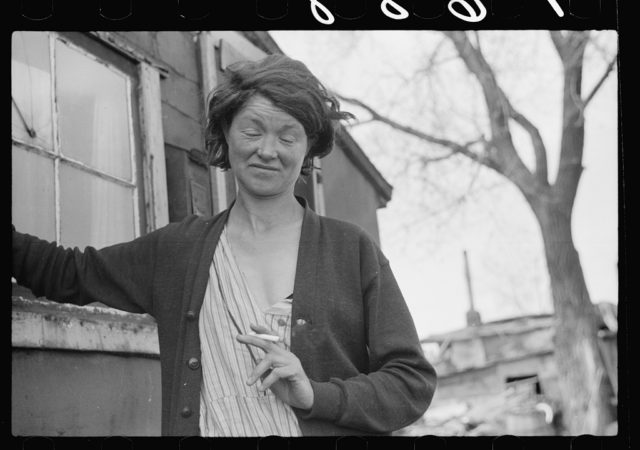
Louisville was most damaged by the flood of 1937. More than 60 percent of the city was under water and 175,000 residents had to leave their homes. It was in Louisville where Margaret Bourke-White made the legendary photography.
However, this was not the only billboard in the United States and as Alex Q. Arbuckle wrote for Mashable, the National Association of Manufacturers erected 45,000 billboards nationwide which were placed in every city populated with over 2,500, reaching an estimated 65 million Americans daily.
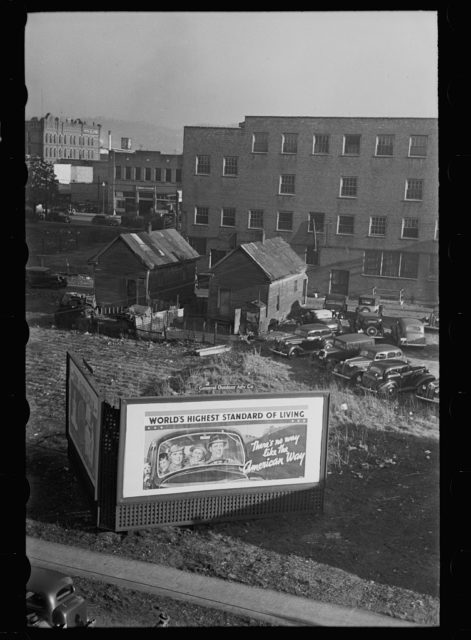
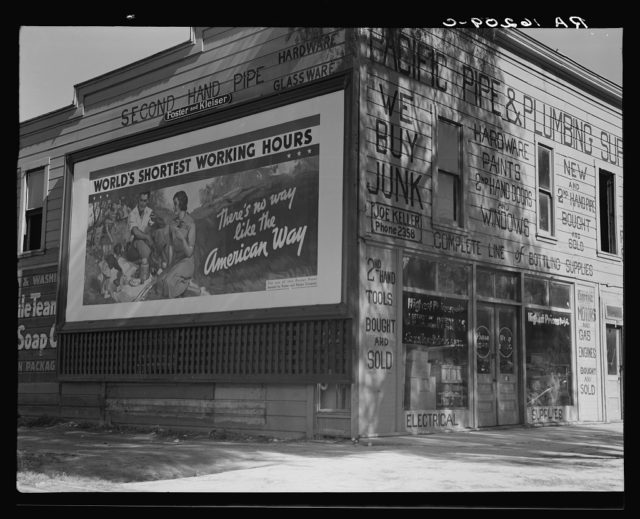
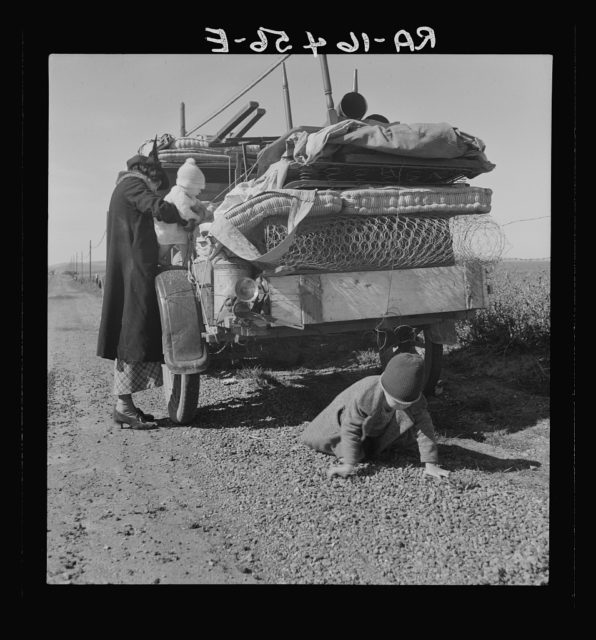
Founded in Cincinnati, Ohio, in 1895, the National Association of Manufacturers vigorously opposed labor unions and many of President Franklin D.Roosevelt’s government regulation proposals. In the 1930s, the NAM launched its first public relations campaign involving movie shorts, radio speeches, leaflets, films for schools promoting the benefits of capitalism and opposing state intervention.
In a period of 13 years, the NAM spent more than $15 million for its campaigns. When the Great Depression came to an end, they continued campaigning against government investment comparing it with Nazism and Communism.
